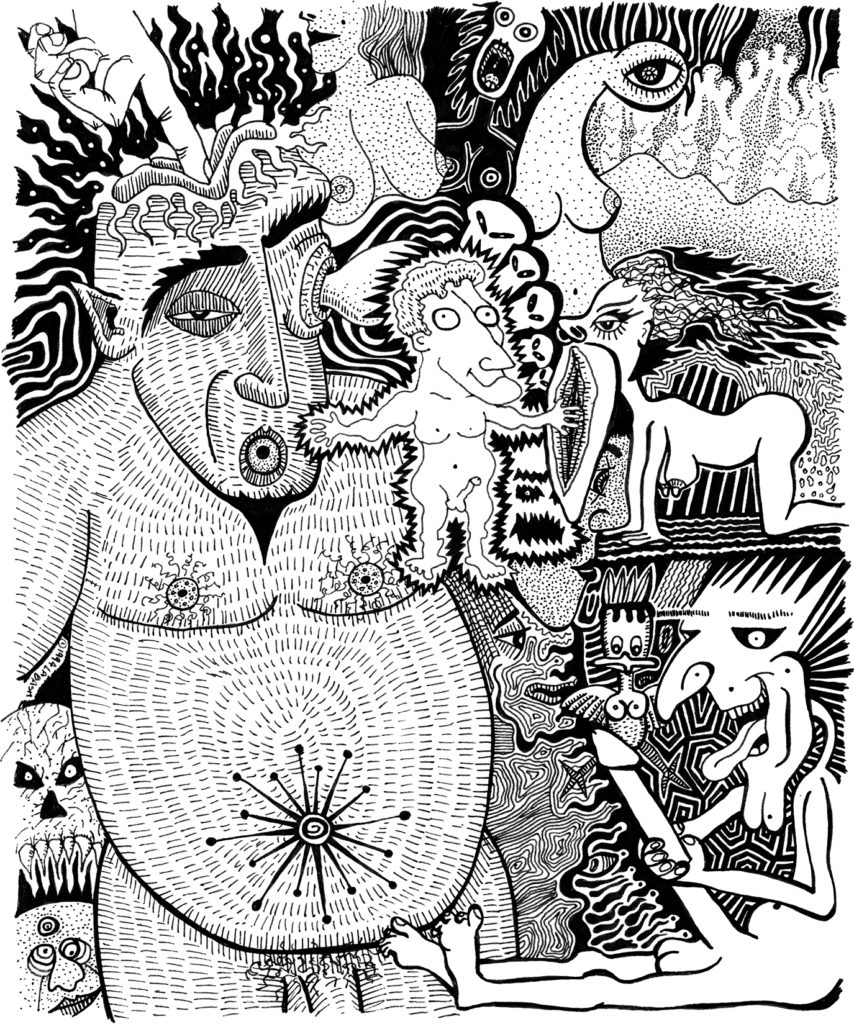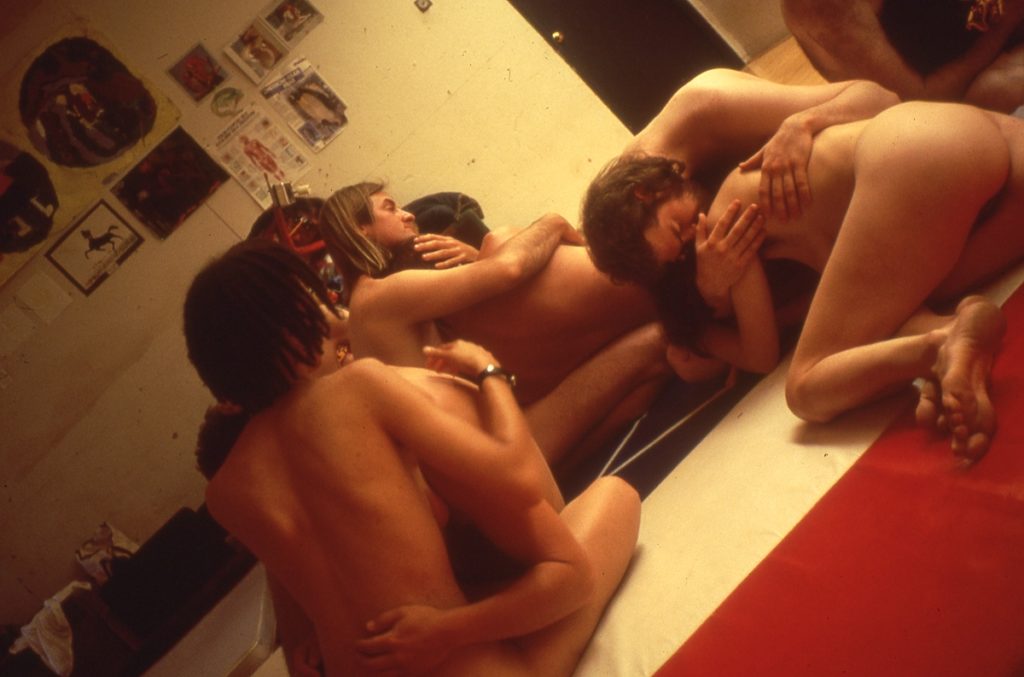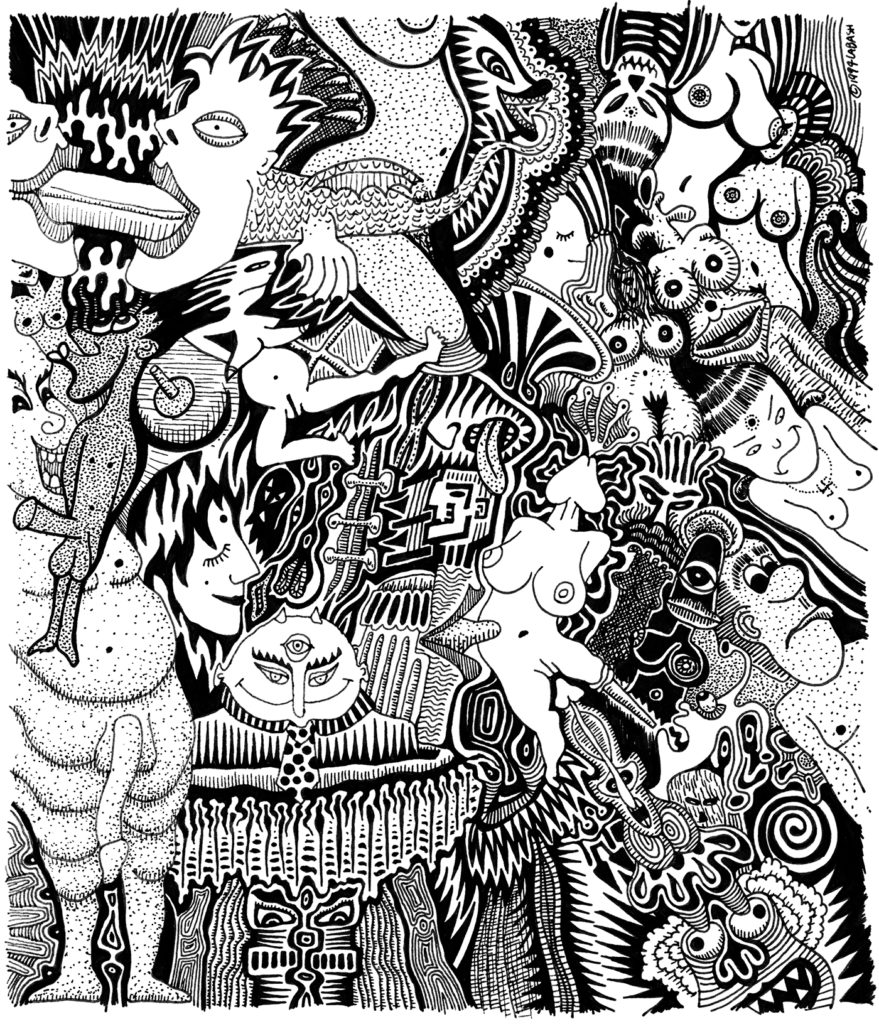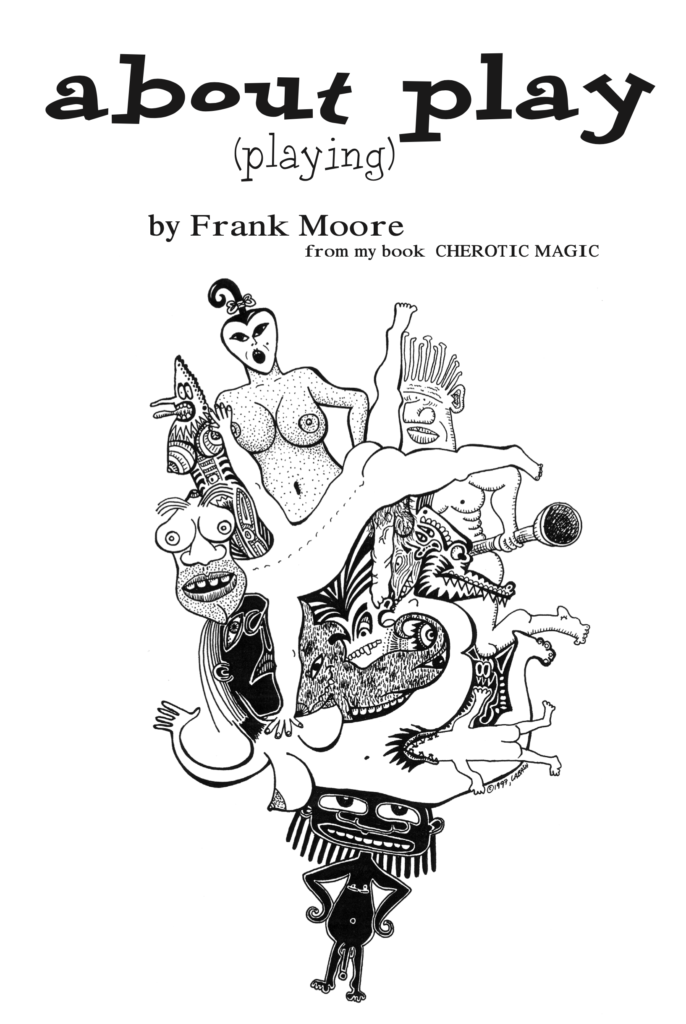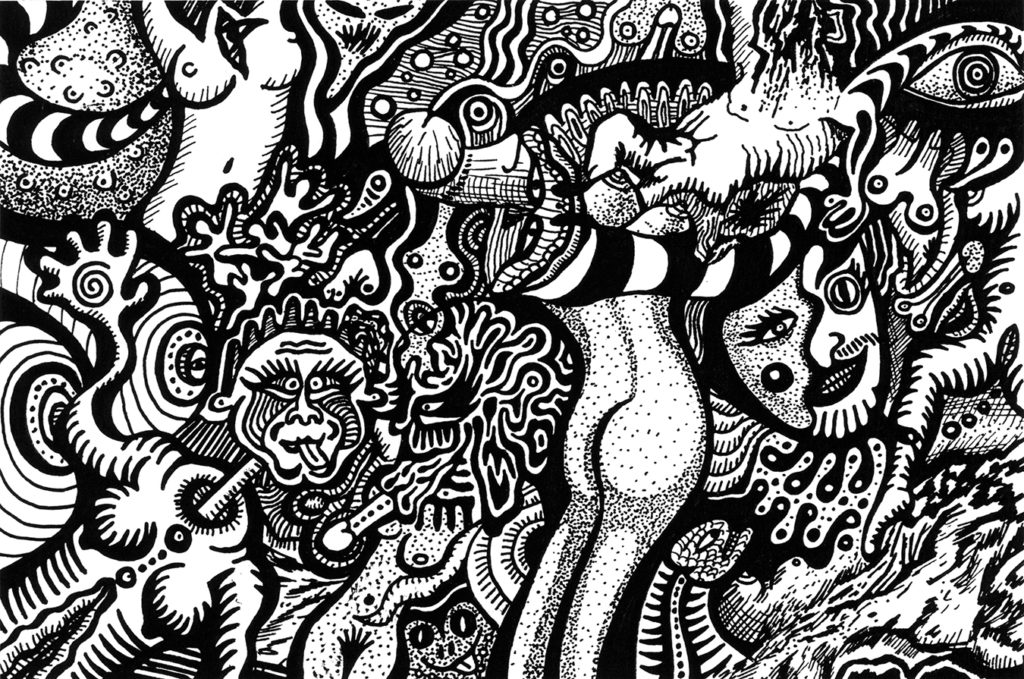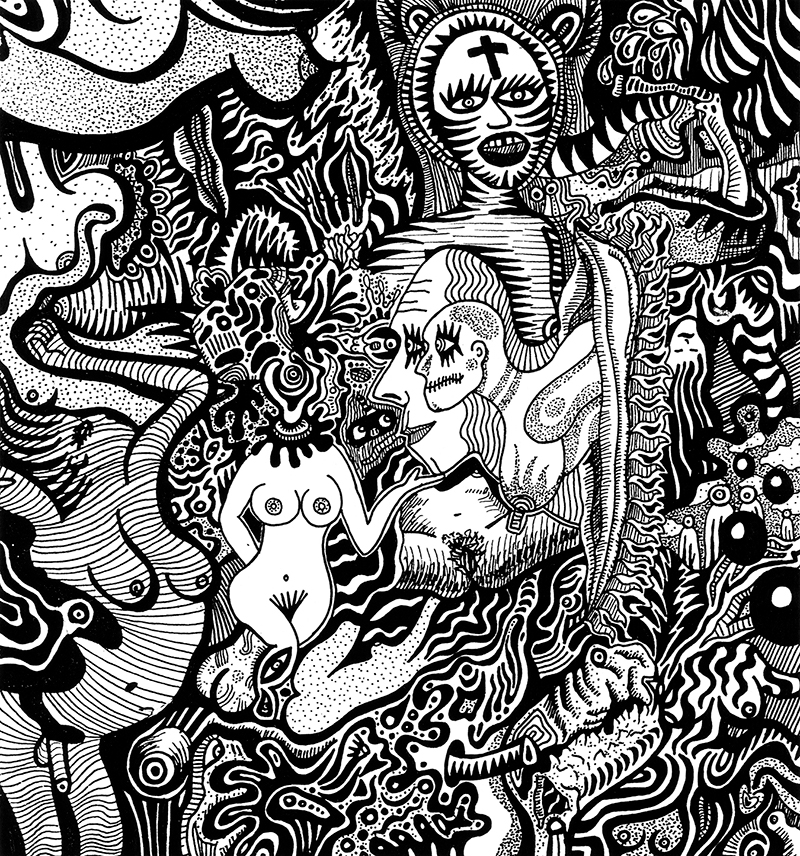As published in Shades of Grey (1985) & Smut (1991).
Eroplay in Life and Art
A WORK IN PROGRESS
Frank Moore, 1983
Eroplay is a made-up word for intense physical playing and touching of oneself and others. Eroplay is also the force of energy which is released as the result of such play.
Our mind needs labels, words for something to be able to think about the thing clearly. There is such intense physical play, and such a force of energy, which I have labeled eroplay. But before this, there has not been a word for it. Usually the word sex has been the catchword for people to dump on almost everything sensual, romantic, physical, or showing more skin than usual. Cars are called sexy. Poses that do not show the sex act are called sexual. Wearing certain things, moving certain ways are all called sexual even when it is not leading to the sexual act … even when there is no intent to have sex.
In magic, words have power. To create a word for something is to create the possibility for it to exist in our reality … for it to happen. Even for us who intellectually knew eroplay existed as a separate thing from sex, it was hard before the word eroplay to talk about it clearly, to think about it clearly, and to experiment and play with it without sexual undercurrents and fears creeping in. This was because we had to use words like lusty, sexy and erotic to attempt to talk about it. In our language, all of these words have sexual connotations. In magic, words create. So if you use sexual words for non-sexual playing, the sexual words will create a false sexual confusion. This is why the word eroplay itself is important.
Eroplay is not foreplay, even though foreplay is eroplay.
I have a somewhat good idea of what eroplay does to and for people. But the causes of the results are untested theory.
Kids play very physically both with their own bodies and others’ bodies. They get turned-on by this play, turned-on both physically and mentally. This turn-on is not sexual in kids. Studies have shown that babies who are held, touched, and played with are more healthy and alert, weigh more, and have a lower rate of death than babies who are denied this eroplay. Studies also show that old people who live alone, who don’t get physical and emotional contact, are less healthy and die sooner than people of the same age who live with others and get that physical contact.
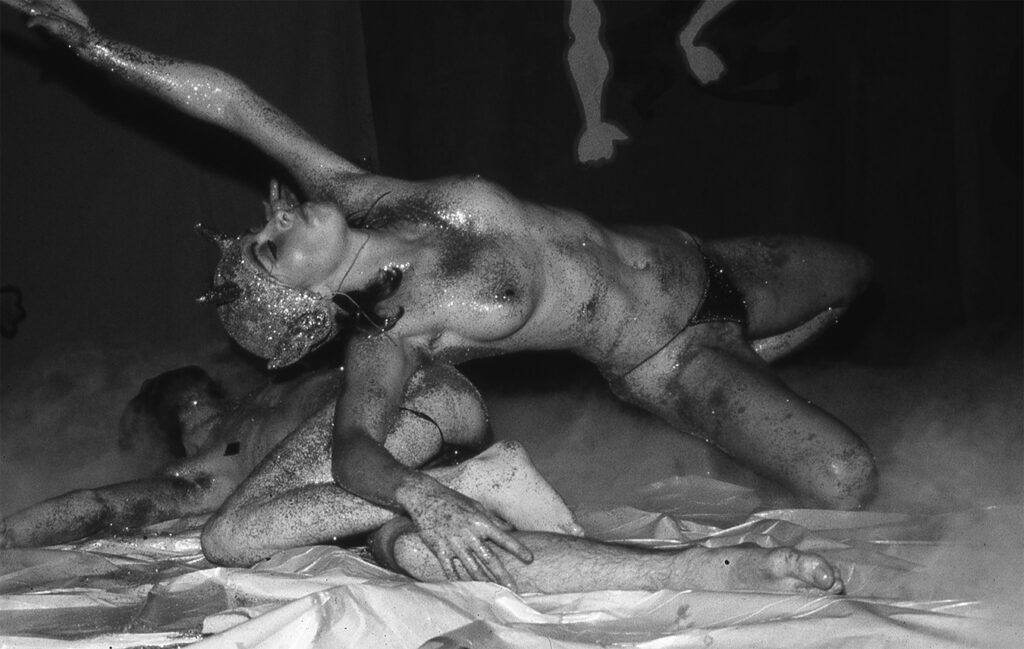
When we grow up to adults, eroplay is linked to sex, maybe to assure procreation, but there may be different results when eroplay is connected to the sexual orgasm. We may need a certain amount of straight eroplay (not connected to or leading to sex) to be as healthy as possible.
Foreplay leads to orgasm … eroplay leads to being turned on in many different ways and in all parts of the body. It can be different every time.
Skin touching skin seems to be what releases the full impact of eroplay.
Eroplay can be intense. It is like rubbing a puppy on its belly; the puppy goes into a state of rapture, both totally turned-on and relaxed. To use something that is not normally confused with sex, eroplay is the blissed-out, warm, relaxed, turned-on, totally satisfying feeling of a good head rub. The same feeling comes from playing with one’s ears. Eroplay is that intense feeling throughout the entire body.
Sex seems to be connected to mating; whereas the combination of both physical and psychic forces released during and after eroplay seems to be connected more to communication and attracting people to you.
What stops most people from physically eroplaying without connecting it to sex, without sexual undercurrents or expectations, is the inability to see where eroplay ends and sex begins. The difference between foreplay and pure eroplay is one of intent … physically there is no difference. But there is a difference physically between eroplay and sex. Eroplay is satisfying in itself, in relaxing intensity. There is no build-up of pent-up energy in one climactic act. In sex, however, there is a point where foreplay (eroplay) ceases to satisfy and energy gets pent up and built up to be released in the sex act. This build-up is a clear and broad dividing line between the turn-on of eroplay and sex.
Eroplay starts when the possibility of the physical eroplay arises, the possibility of breaking normal rules, social conventions, and morality.
The possibility of physical eroplay is enough to start releasing whatever chemicals and other forces that physical eroplay will continue to release. Talking and thinking about eroplay will excite, will turn you on, even physically. This seems to be a natural part of eroplay, an innate part.

But the turn-on of the possibility of breaking the taboos, rules, and the common morality is not a natural part of eroplay. It has been added on to eroplay by social repression. Anytime you break a social taboo, there is a release of energy that may feel good, almost like a high. But sooner or later you have to go back into the system where that taboo still exists. Then, more often than not, you will get a backlash from the breaking of the taboo. This backlash may take many forms; it may come from inside yourself or from others who have not been in the uncommon experience. This backlash may overwhelm you. This is the only bad side effect connected to eroplay. If you can ride out this backlash – if you have it at all – you will be a stronger person and you can modify the moral system to fit how you want to live. This has more to do with breaking taboos than it has to do with eroplay itself.
But breaking taboos has always been a part of art … at least the area of art that seems to change consciousness, change morality, change reality.
The breaking of taboos ideally should not be a part of everyday eroplay, but it is. Art can slowly take eroplay out of the taboo area. This is one of the functions of art.
Eroplay is fun. This is the most important statement in this outline.
Eroplay is innocent and childlike.
Eroplay’s focus is on physical enjoyment and pleasure for its own sake. This is one reason why eroplay is taboo in our society, where religion teaches physical pleasure for itself is bad.
<Coming soon to this spot: a brief history of the western romanticism and the anti-pleasure morality … what eroplay is up against.>
Eroplay connects you more with your own body and with other people. It decreases isolation and alienation. It increases self-trust and trusting of others. It makes you harder to be controlled. This is another reason why eroplay is taboo.
Because the after-glow of eroplay attracts people to you, you get more opportunities in all aspects of your life. And because eroplay relaxes you and gives you more energy, you are in a better position to use opportunities.
Because eroplay is not focused on goals other than physical enjoyment in many ways, and because it does not lead to a mating life, eroplay would be much harder to use to sell products than sex. This is another reason why eroplay is taboo.
Most of the so-called sex problems in sexual relationships have to do with trying to do with sex what eroplay can do, trying to fill needs with sex that sex can’t fulfill. This leads to the downward spiral of frustration, self-doubt, trying too hard, and blame. Even legitimate marriage and sex counselors advise more play which does not lead to sex as well as more foreplay with sex.
Since eroplay may release certain chemicals in the body, to get familiar with what eroplay itself does, not adding other chemicals will help.
Since in a sexual relationship there is always the possibility of sex, eroplay is always different in a sexual relationship than in a nonsexual relationship, even when the eroplay does not lead to sex … because, as we have seen, possibility is an important factor. So eroplay in a sexual relationship is always in relationship to the possibility of sex.
Since eroplay is not mate-originated, it is possible to have a relationship with a friend in which eroplay is an important part, but in which the possibility of sex and romance is very clearly excluded. This kind of relationship will have good effects on your other relationships.
To illustrate both what eroplay can do, and the difference in effect of eroplay and sex, I offer a page out of my life. In the ’70s, I had a group of about thirty people. It was fairly clear to us that there was a difference between playing and sex. It was not as clear to us as it is in this paper. We saw that it has something to do with sex and “marriage” (the word “marriage” is another word that has negative connotations hidden within it), so we decided to commit ourselves to having sex only with those to whom we were married. But we eroplayed with all of the people in the group. The eroplay became more intense, more playful. We as people got wackier, more physical. It gave us a greater freedom not only within our group, but in the general society as well. By eroplaying intensely, but playfully, it released a certain creativity which we used in many ways. Successful businesses were established. We did several public performances, a stage show that ran for three years, and a wealth of wacky private performances. All of these had the vital energy of eroplay, of unlimited possibility. We were kids playing together even though we were adults. Even though the eroplay could become very intimate, physical, soft, and sexy, there was no jealousy or possessiveness because it was clear that sex would not be involved. This went on for three years.
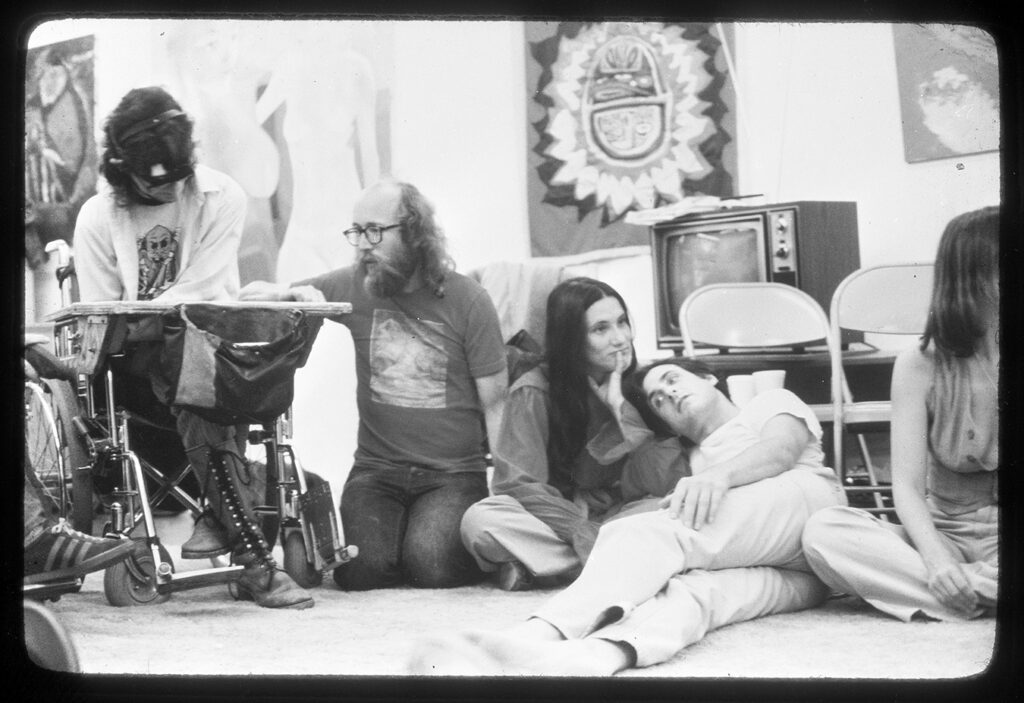
But … you have been waiting for this “but” … at a certain point, we started questioning the concept of marriage: What was the difference between what we thirty had together and being married? We did not see any difference. (We were using the misleading word “marriage”. I see now that we should have used the word “mating”, which does not refer to child-bearing, but to bonding.) Not seeing any difference between marriage and what we had, the next logical question was, “Why not have sex?” So we started to have sex outside marriage within the group. Almost immediately changes appeared in the group. Jealousy and possessiveness appeared. The playful creativity which came from eroplay dried up. Playing and the physical freedom between the people quickly ceased to be. The spark of our show was not there anymore. The group as a group quickly began to fall apart.
This is why my interest in the difference between sex and eroplay has increased and formalized in my art … why I long to tap again into intense, pure eroplay with people, then use the resulting creativity in art without being derailed by sex.
Which brings us to eroart.
Thanks to the repressive, sexual, anti-pleasure morality, romanticism, and pornography, the traditional area of eroart – art that uses nudity, physicality, and/or sex to turn people on to life – has been ripped off by pornography.
Almost everyone is against porn films. Almost everybody in his right mind. But everybody isn’t in his right mind, which is why there is porn anyway.
But it is fashionable to be against porn. There are many good reasons to be against porn. Fashion is not one of them.
The anti-sex, anti-pleasure, anti-nudity morality is not one of the good reasons to be anti-porn. This kind of repressive morality was the main reason why during the nineteenth century kinky violent porn caught on.
What I am interested in is art that creates in people the desire to go out and play with other people, and to enjoy life. This is the art of eroplay. Historically, one of the tools of this art has been the sex act. But sex has only been a tool, not the goal. And it is just one of many tools. Isadora Duncan is a person whom I would call an artist in the eroplay tradition. She used nudity (especially at private parties where she could dance without feeling moral judgments) and movement to turn people on physically to their own bodies and to passion for life. This is the true goal of eroplay art, which has been called eroart. Most books on eroart miss the true purpose of such art. There has always been sexual erotic art. This kind of art is universal and can be traced back to the caves and beyond.
<Coming soon to this spot: a brief history of erotic performance art.>
This is not true for what is defined as porn. I am trying to define eroart. We are forced to separate it from porn, and rightly so.
It is fashionable to be anti-porn. But it is human to be anti-porn because porn is anti-human, not only anti-female. It is violence between individual people. At times, this violence is graphic. It is personal and intimate violence in a hostile and impersonal form. I hurt you to make me feel turned-on because I cannot get turned-on in any other way because I cannot feel … besides, you like being hurt … if you don’t … who cares …. This isn’t the symbolic or surreal violence in other kinds of films.

Porn is also anti-human because it creates a picture of what sex should be that is unreal and boring. It creates pictures of what you should be like … pictures which are hard to live up to … and if you do live up to them, you will be a big-dicked jerk or a big-titted bimbo.
These are the fundamental reasons why to be anti-porn.
But face it, the main reason that most people are anti-porn is because porn is boring and dumb. The people who make porn (I am talking about straight porn now, leaving the kinky, violent porn in the trash can) think that the main reason why people go to see porn is to see tubes going in and out of holes. So they cram in as many tubes going in and out of holes as possible in ninety minutes … and as close-up as possible. This may be true for some people, but for most people, it gets boring once curiosity is satisfied, curiosity about what it looks like, and once the possibility of seeing everything is fulfilled.
It is fashionable to be anti-porn. But it is not fashionable to offer an alternative to porn. It is not fashionable to admit that people like seeing other people nude, seeing other people getting turned-on and being turned-on. It is not fashionable to admit people are curious to see other people’s bodies, to see what they are really like under those clothes. It is not fashionable to admit people feel cheated whenever the camera moves away, fades away, when the people on the screen are getting intimate. It is not fashionable because it would be putting yourself, your body, and your emotions where your ideals and your politics are.
To make videos that satisfy that child-like need of seeing nude bodies and seeing people playing, making out, and having fun is not as profitable as either what Hollywood does or what the porn-makers do. This child-like need is the healthy human desire that is perverted in porn.
The time is right for an art form that addresses this healthy desire. The women’s movement has changed people’s standards with regard to sex and the quality of relationships. This is true of both men and of women. They have scrapped, or are scrapping the old sexist ways and attitudes, and now they find the old-style porn disgusting … but more importantly, they are finding porn is not meeting their needs and desires. They want to be turned-on in a way that is not sexual; they want to see nudity without stupidity; they want to see new ways of relating between humans both in and out of bed. Eroart in all media can show this way of relating … can show both purely nonsexual eroplay and eroplay as foreplay in sex.
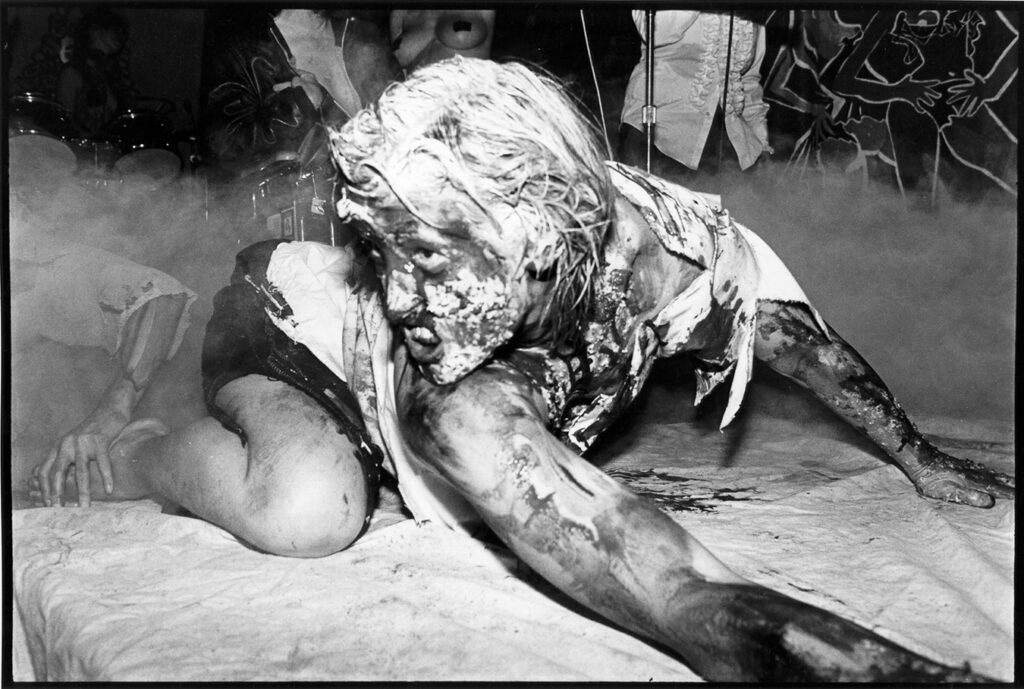
Film and video can do this. But the producers of porn haven’t the foggiest idea of this, and have a vested interest in the meat approach. In its broadest definition, erovideo could be any kind of film – westerns, thrillers, science fiction, etc. – in which the unwritten rules are not followed. The camera doesn’t fade or cut away from erotic scenes before it is logical to do so … bodies wouldn’t be cut off. Cable has made porn so available that it has removed the glamour of the forbidden. As a result, porn has to stand on its lack of merit. As a result, the sales and rentals on adult tapes are going down, and the adult cable systems are going out of business.
The desire to see nudity and intimacy and to be turned-on is not being satisfied. Hollywood is caught between being ruled by taboos and being in the business of teasing. Andy Warhol once said Hollywood has been doing a forty-year striptease, showing a little more each year to get people to come back. The closest Hollywood comes to the erotic/sexual (except for a few maverick directors like Roeg) is the sex-exploitation and youth exploitation films. There seems to be an unwritten rule that if it is sexy-sexual-nude, it has to be dumb. Hollywood does exploitative films because they make money. They make money because they are the closest thing to the erotic/sexual that is offered. But sitting through a dumb movie to see nude bodies of dumb people is not worth it. Hollywood, however, will not take risks.
Hollywood will not make such a risky, daring product as a truly erotic film mainly because of the high money stakes involved. The pornographers will not do it either because of their lack of skill, insight, and morality, or because they too are ruled by money, and by criminals.
But breaking taboos has always been a part of art, at least the area of art that seeks to change consciousness, change morality, change reality. The breaking of taboos ideally should not be a part of eroplay for everyday life. But it is. Art can slowly take eroplay out of the taboo area. This is one of the functions of art.
Here is where art comes in. As I have said, this kind of art creates a kind of bubble in which the forbidden can be done with immunity, releasing energy of the broken taboo … energy which then affects society as a whole. Art makes a clear circle of difference between this bubble and everyday reality; it is a kind of safety valve for society … much as dreams are to the individual. According to the book THE PAINTED BODY, the caves where the first artists did their work where no one could see were such bubbles, as was body painting. Performance art is this kind of consciousness-altering art. It creates a special time and place where taboos can be broken, where new ways can be introduced into the society.
The other way that art can make it easier for us in everyday life, and at the same time fight against the anti-pleasure, anti-human morality, against sexism, against pornography, against romanticism, is by showing us eroplay, both with and without sex, and getting us acquainted and comfortable with eroplay. This can be done in all media. Enter erovision. Erotic projects could be made on half-inch videotape by individual artists to be sold directly by mail from the artist to the individual viewer. This would avoid the power structures that grow up around big money. Half-inch video, home video, is cheap in materials, editing, and post-production, and distribution is much, much cheaper than in any other format. The technical quality is acceptable, and free from the comparison with film or professional three-quarter inch video. Home video is the workable channel for any product that the establishment will not touch … or that you don’t want the establishment to touch, hence control. Such is erovideo.

Whether we as artists do eroart to release magically eroplay into the air (such as through performance art) or to show the non-sexual way of relating that is eroplay (such as through video or film) … whether we choose to use the sex act or not in our eroart … we must not let our work be defined in relation to pornography. There has been a huge amount of time and energy wasted trying to define and ban pornography. The best way to undermine sexism and pornography is to create an alternative to them. Take back nudity, pleasure, sex, and eroticism from pornography. Show pornography up as being drab, inhuman, unfun by creating a fun, human, happy alternative. Create eroart! This is overstating the case somewhat because you cannot do good eroart if it is in reaction to porn … only if it comes from some warm and playful place, can it be good eroart. Unless we put ourselves – our creativity, our minds, and, yes, our bodies into representing eroart as the humanistic alternative, the pornographer, the sexualist, and the moralist will win by default.
Some of the accompanying photographs are of acts within a performance/exhibition called “The Outrageous Beauty Revue”, conducted for several years by Frank Moore in Los Angeles and San Francisco.
This essay was also included in “Caves: a book for a performance tour” for a performance tour in the Spring of 1987, which included performances in Denver, New York City and Philadelphia. It is included in the first edition of “Cherotic Magic” published in 1990 by S/R Press, and also in the revised edition, “Cherotic Magic Revised” by Frank Moore, published by Inter-Relations in 2015.
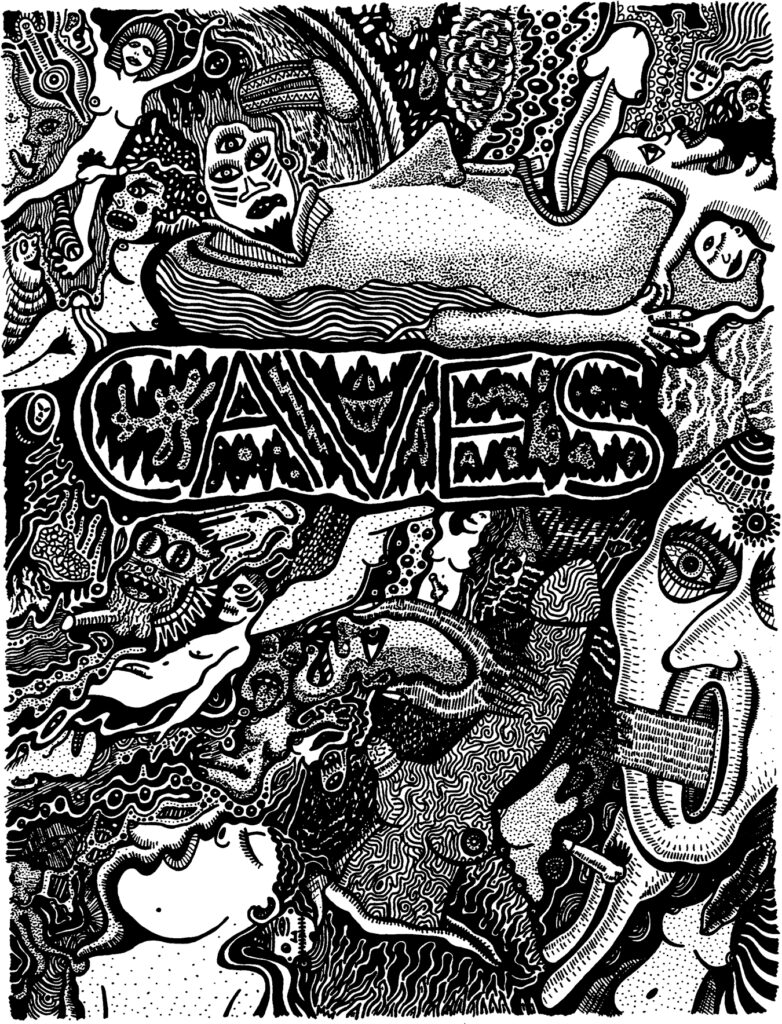
It was also published in the book, “Frankly Speaking: A Collection of Essays, Writings & Rants” by Frank Moore, published by Inter-Relations in 2014.
